The illustration below shows all of the notes of the G Major chord. You should try to memorize each note and its position. A good exercise is to start with the root note, which is the G note for the G chord. Pick the G note then the B and D notes in all of the different positions.

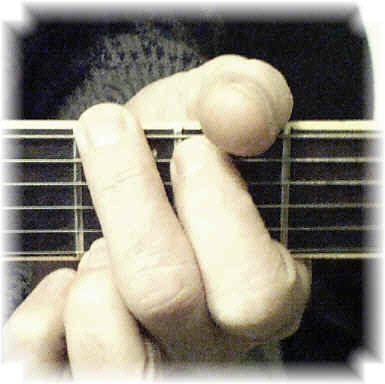
|
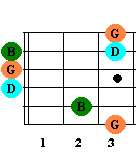 |
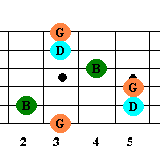 |
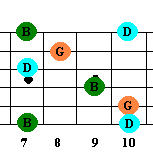 |
The illustrations to the left shows a few places to play the Arpeggios. Always start with the G note and play each note from G to G one at a time. Pick down and then up to get that picking up to par. |
We will use the key of C major to illustrate the notes for the G major chord. The G major chord is the 5th chord in the key of C major. It is also the Dominant chord for the key of C major. The dominant chord usually wants to resolve back to the tonic chord. If you are in the key of C major, the tonic chord would be the C chord. So if you had a progression of C F and G the G wants to resolve back to the C chord. However, the G chord is played as the G7 chord to create a even stronger Dominant chord.

Since the G chord is a major chord, we could use the G major pentatonic scale over the G chord. The notes in the G major pentatonic scale are: G A B D E. All of these notes are in the key of C major. A good place to play the G major pentatonic scale is starting at the 3rd fret. The same position would be at the 15 fret since all notes repeat after 12 frets. Another popular position is in the open position and the 12th fret position. But it is a good idea that you play all the notes covering the whole fretboard. Eventually all the notes will become second nature. You would use the same fingering pattern as the C major pentatonic and F major pentatonic we covered in the last lesson. Check out some G major progressions too.
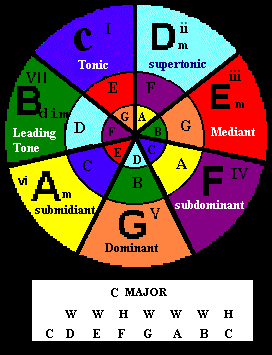 |
|
Good Luck,
From the Jam Room







